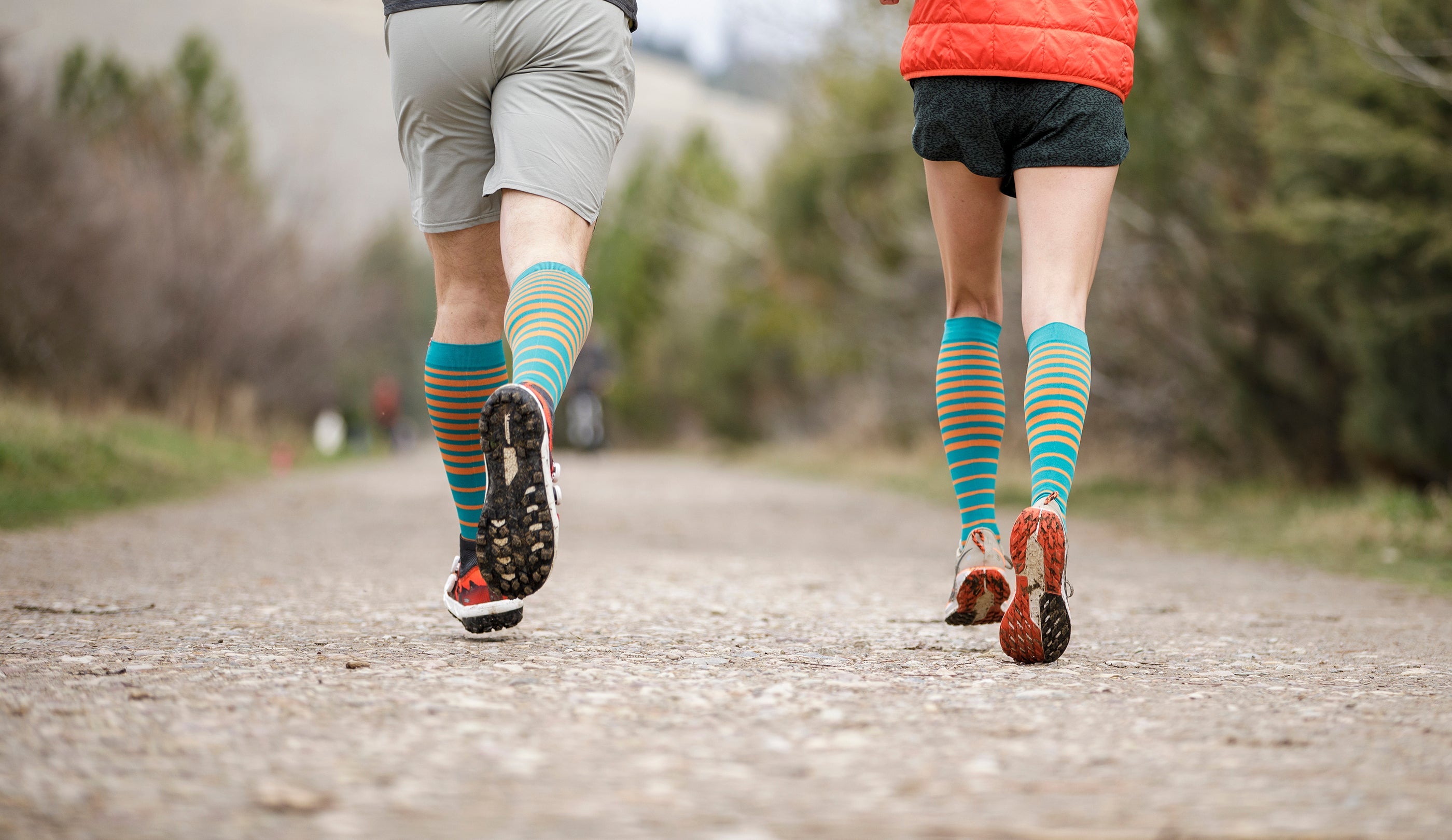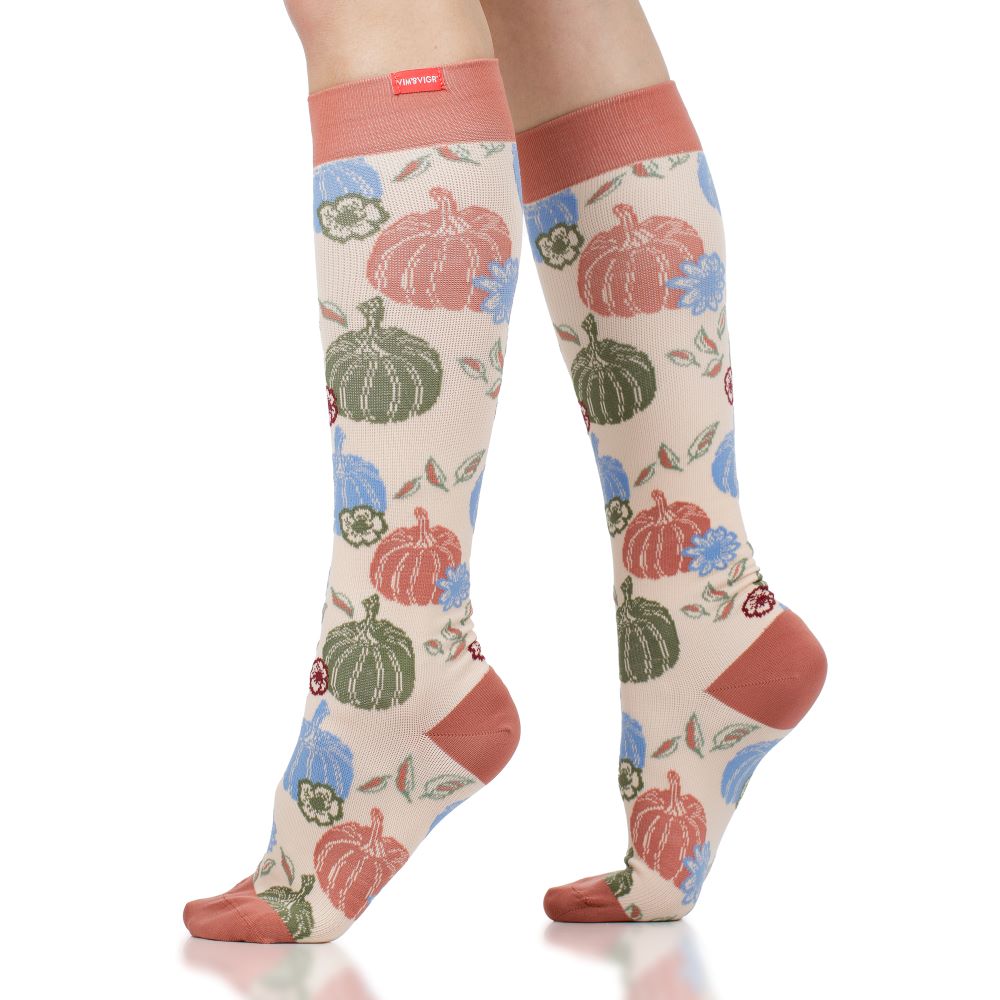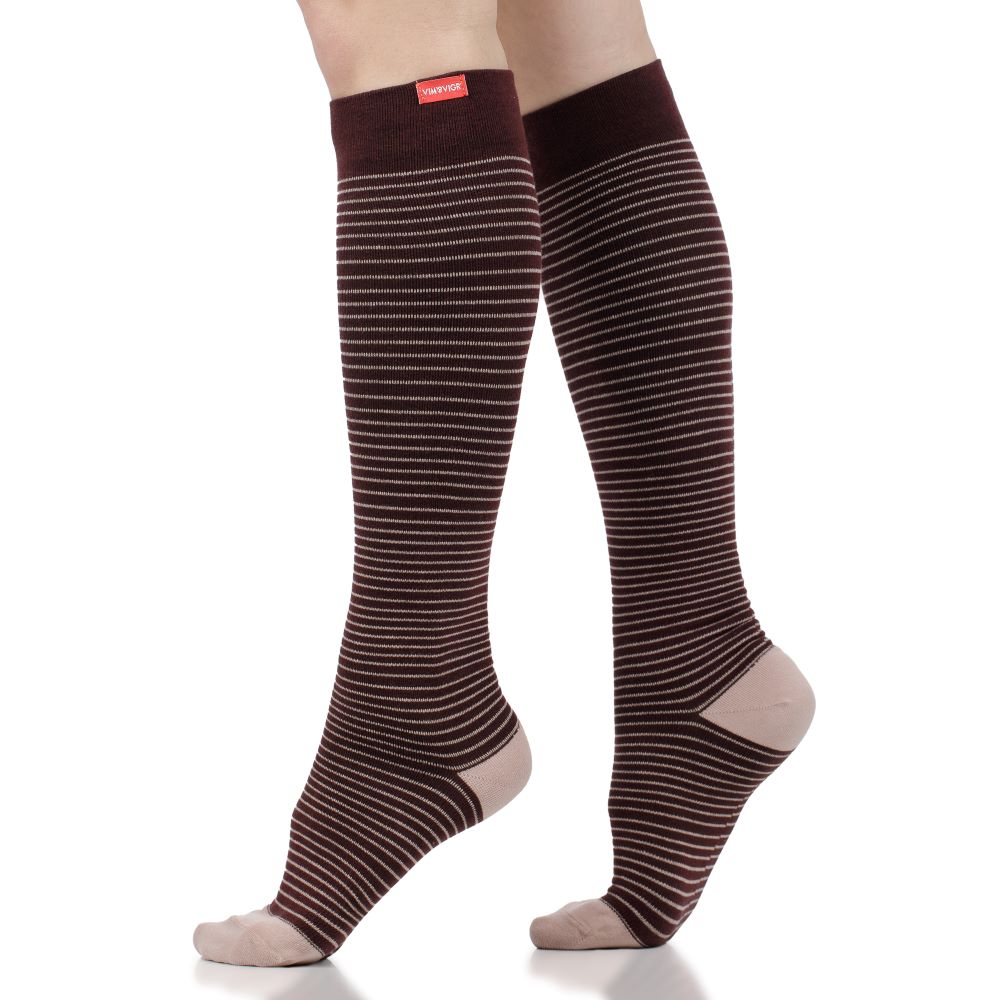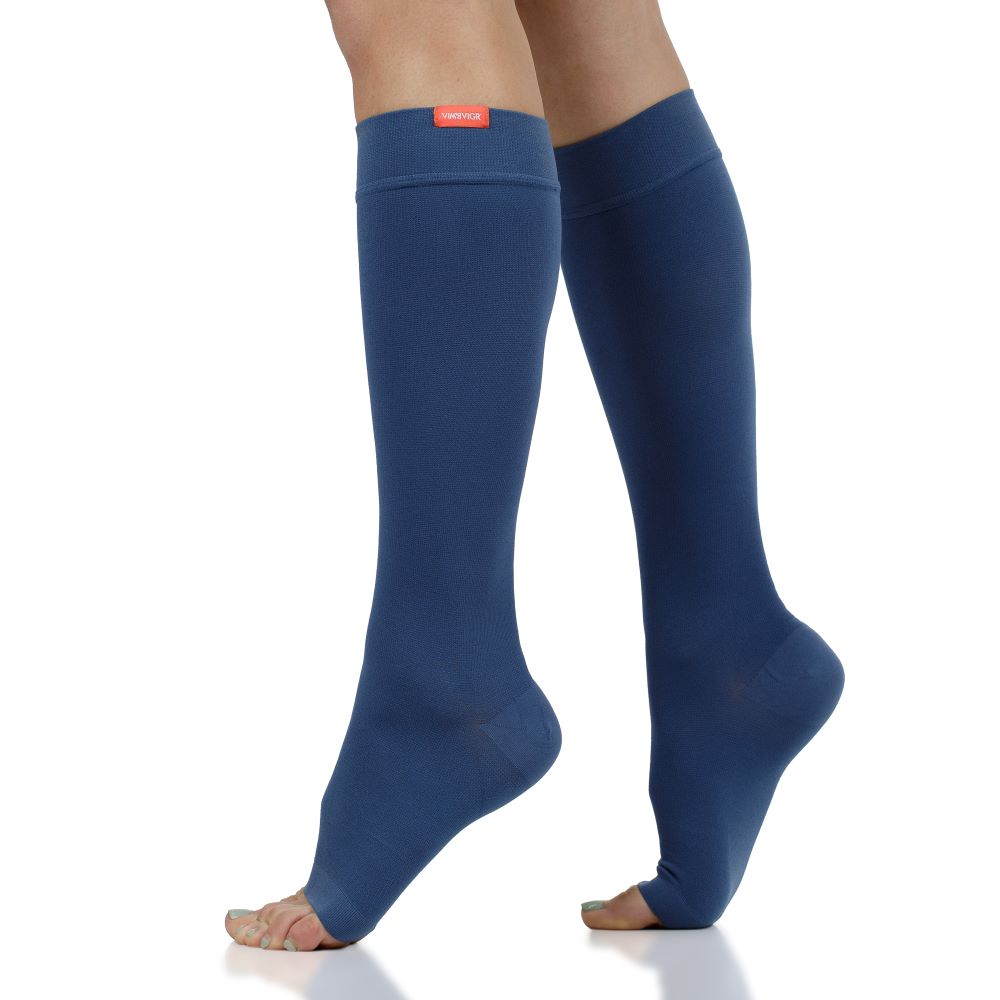The Benefits of Compression Socks for Retail Workers
Retail jobs are famously busy and stressful. You’re on your feet all day and have to deal with lots of challenges and different customers. The last thing you want is to feel those painful, throbbing feet or swollen ankles at the end of the day.
By wearing compression socks, you can prevent a lot of the discomfort associated with standing all day at a retail job. They’re also great for helping you recover in between shifts.
In this article, we’ll tell you all about why retail workers should wear compression socks to feel fresher, more energized, and comfortable.
Should Retail Workers Wear Compression Socks?
When you spend long periods of time on your feet, blood gives way to gravity and you have a higher risk of developing blood clots, of legs swelling and being uncomfortable, and of suffering from painful, swollen feet. For retail workers, light compression socks suitable for everyday wear can alleviate all these symptoms and prevent more serious health problems.

Depending on scheduling, some retail workers may get to move around more or sit down at a desk. However, this doesn’t mean they cannot benefit from compression. In fact, when sitting for a long time, blood pools by the ankles and you could suffer from the same issues as when standing. Wearing compression socks, along with occasional stretches, will make a huge difference in your comfort levels.
How Do Compression Socks Help Retail Workers?
Compression socks and stockings are designed to apply gentle pressure to the lower legs, often in a graduated manner. This stimulates blood circulation and works against gravity, pushing blood up towards the heart from the feet and legs.
Good blood flow is essential for the healthy function of our whole bodies. Blood transports oxygen and nutrients throughout them, replenishing tired muscles, revitalizing us, and maintaining our organs. So, by supporting blood circulation, we’re essentially supporting the whole organism.
Compression socks play an important role in keeping the lower limb blood flow going. This area is particularly challenged in retail jobs, where you will be on your feet at least 5-6 hours a day. Gravity makes blood more likely to pool by the ankles, leading to swelling and pain. This can be avoided by stimulating blood flow with graduated compression socks. There are also additional benefits from wearing the socks, including muscle and joint support and reduced fatigue.
The Challenges of Working In Retail
A job in retail involves working long hours, mostly on your feet. This demands a lot from the leg muscles, particularly the calves, while also placing a strain on the circulatory system.
Most retail workers’ schedules revolve around shifts, typically around 6 hours long. They tend to be on their feet for most of that. Moreover, retail work doesn’t just involve standing and walking around with customers. It can also take you into the warehouse, up and down ladders, and carrying large boxes. All this, while keeping a smile on and forgetting about the growing soreness in your feet and legs!
At the end of a shift, retail workers can expect to feel tired and have heavy and swollen legs. This can get worse in the summer months, because of the added heat pressure. And, if you’re required to wear certain types of uniform, including a heeled shoe, this also adds to the discomfort and pain in the legs. Finally, you’ll have to do it all again in a short time when you’re on the next shift, which means you need to recover quickly and efficiently.

The Benefits of Compression Socks for Retail Workers
Standing all day leads to discomfort, whether caused by impaired blood flow or muscle stress. For retail workers, relieving these symptoms and preventing the feeling of “heavy legs” on long shifts is essential. Here’s how compression socks help.
Improved Blood Circulation
Graduated compression socks apply a gentle massage to the lower legs. They are tighter at the ankle and pressure is gradually reduced towards the knee. This stimulates circulation upwards, preventing blood from pooling at the ankle.
Improving circulation yields multiple benefits. It reduces swelling and pain in the limbs, but it’s also essential for feeling more energetic throughout the day. Studies show that it reduces inflammation from injuries and discomfort. Finally, better blood flow helps reduce muscle fatigue in the long term.
Reduced Swelling in the Legs, Ankles, and Feet
By supporting blood flow in the lower legs, compression socks help prevent any swelling from setting in. This is great news for those having to stand all day and it makes their recovery easier, too.
Reduced Leg Fatigue
Compression socks boost circulation in the limbs, which positively affects the muscles. Since more oxygen and nutrients are delivered constantly to the leg muscles, they are less likely to become fatigued easily. By keeping legs fresh, your overall energy levels will improve, too.
Prevention of Varicose Veins
One of the dangers of poor peripheral circulation is that blood pooling in the veins can lead to the creation of varicose veins. These are swollen, enlarged veins that are unsightly and painful. They often cause discomfort, can cause cramps in the muscles, and can result in even more serious conditions like venous insufficiency or blood clots.
Since compression socks boost blood flow and favor the movement of blood upwards towards the heart, they reduce the risk of varicose veins in retail workers.
Muscle Support
The tight grip that compression socks have on the lower legs can feel reassuring and supportive on the muscles. For athletes coming back from injury, for example, compression garments are an essential part of recovery. They offer extra support to weaker joints. Moreover, compression can reduce the impact of vibrations on the muscles, which, over time, keeps them stronger and less likely to become injured.
Enhanced Comfort
Wearing compression socks in the right material and compression levels for you can make a huge difference in enhancing comfort. These garments provide a gentle massage coupled with reassuring support for the lower legs. By preventing swelling and aches, they also help retail workers feel more energetic and comfortable throughout the day.

Choosing the Best Compression Socks for Retail Workers
To get the full benefits of compression, it pays to know how to choose the right pair of socks. Here are some must-follow steps to do so.
Opt for Graduated Compression
Items like compression sleeves offer one level of compression throughout the limb. This is good for muscle support and recovery, but doesn’t give the same boost to blood circulation as graduated compression.
Retail workers should choose graduated compression socks specifically for their benefit in fighting blood pooling in the legs and feet. They’ll see an instant boost in energy and reduced swelling and pain as a result.
Choosing the Right Compression Level
To stay comfortable, it’s also important to choose the right compression level for all-day wear. We recommend the 15-20 mmHg range for retail workers, since this level of pressure can be sustained for long periods of time. It’s the best for beginners, too.
Sizing Tips for the Perfect Fit
Another essential aspect of wearing compression socks is finding the perfect fit. They should fit snugly, but not so tight that they get uncomfortable. You also don’t want compression socks to be too loose, thereby negating all the benefits of wearing them in the first place.
Look for sizing guides before you buy your pair and follow their steps to get the best fit. It all begins with measuring your calf circumference. Find out more here.
Material and Fabric Options
Compression socks come in various fabrics, from cotton to nylon and merino wool. This is because climatic conditions and your activity levels can have a serious impact on how comfortable you are when you wear them.
Opt for cotton socks for all-day wear when the weather is just fine and you don’t need any specific moisture-wicking help. Nylon socks are thinner and sleeker, providing more of an athletic feel. And, on cold days where you want your feet to stay warm and cozy, you can’t go wrong with merino wool. Since it’s a great thermoregulator, merino wool is a perfect material for warmer days, too, as it lets your feet breathe and wicks away moisture.
Fun and Cute Styles
Wearing compression socks doesn’t have to mean sticking to black - quite the opposite. Our wide range of colors and designs help you make up a whole host of cute outfits and can blend in with any shades you’re required to wear for work.

How to Wear Compression Socks for Retail Workers
If you’re new to compression wear, you may have questions about your socks. Here are some frequently asked ones.
How Long and How Often to Wear Compression Socks
Strictly speaking, there is no specific limit to how long you can wear compression socks safely. However, we recommend that you start with a few hours at home, to get used to the feeling of compression, before switching to keeping them on for the length of your shift.
Wearing compression socks during your shift, even on a daily basis, should feel comfortable and refreshing. But, you can also put them on in between shifts to speed up recovery time and to reduce swelling and aching.
How to Put Compression Socks On Correctly
At first glance, compression socks can look intimidating since they’re meant to feel tight. However, by following these steps, you should be able to put them on correctly first time:
- Slip your arm in the sock until you reach the toes - your palm should rest in the heel of the sock
- Starting at the cuff, fold the sock onto itself, towards your hand until you reach the heel
- Now take your hand out and put the sock on, pulling firmly. The fold should allow you to put it on as if it was a regular sock
- Once your toes are secure and the heel rests in the heel cup, gradually roll the sock up to underneath your knee.
Find out more tips here.
Washing and Caring for Your Compression Socks
Keeping your compression socks in top shape involves taking good care of them in between wears. We recommend washing the socks after every wear and using a regular detergent, with no added bleach, no extra strength. You can simply put your socks in with a gentle, cold wash, or wash them by hand. Then, leave them to air dry (definitely do not use the tumble dryer!).



















Leave a comment